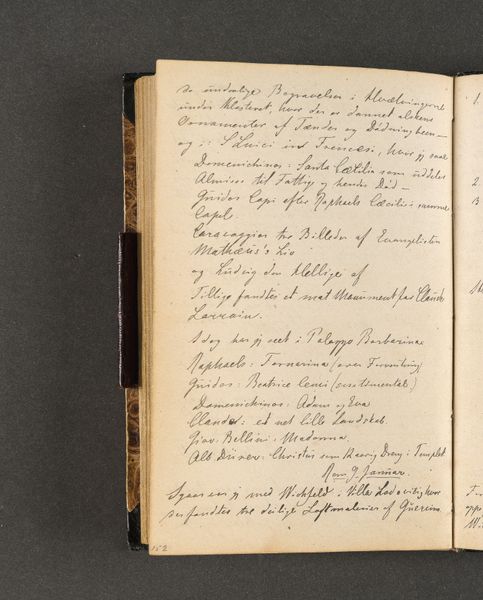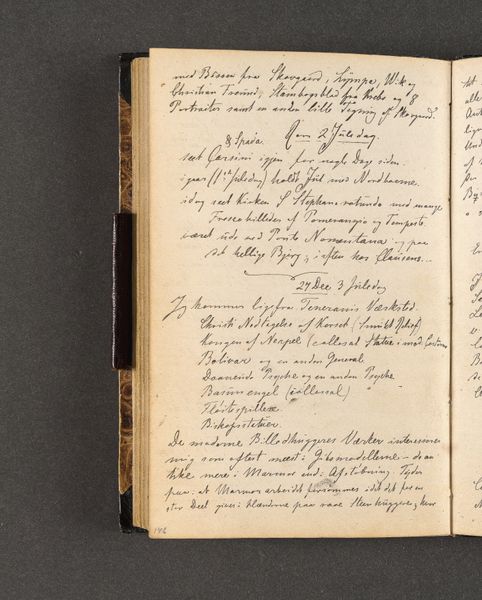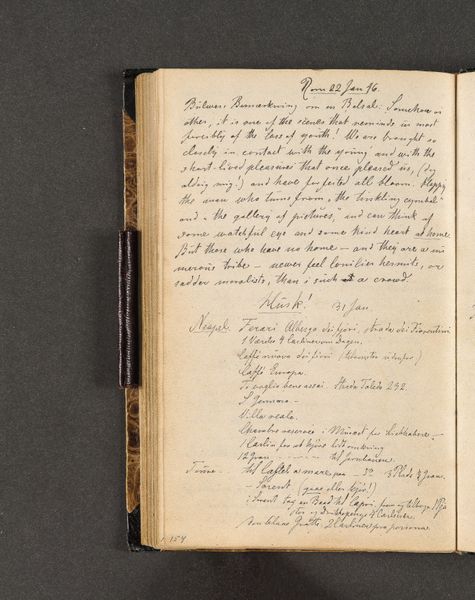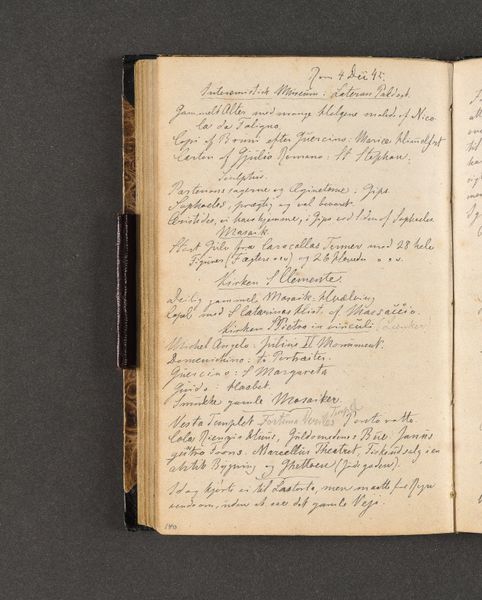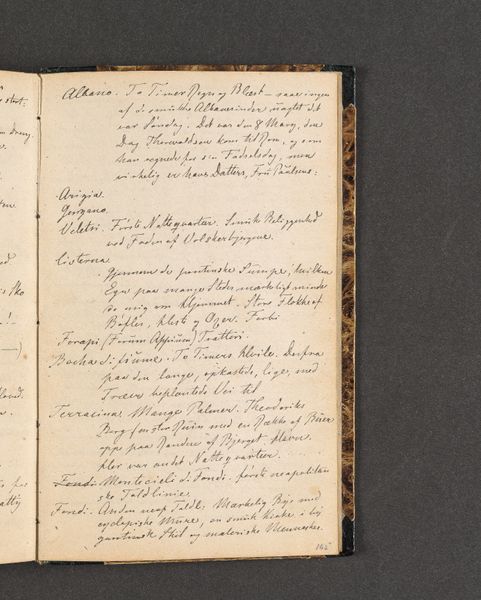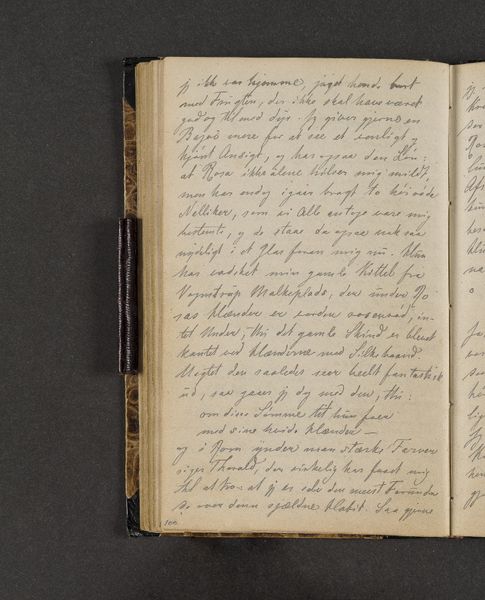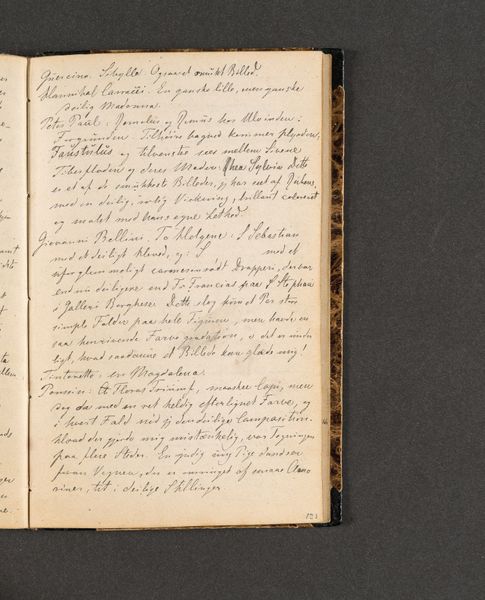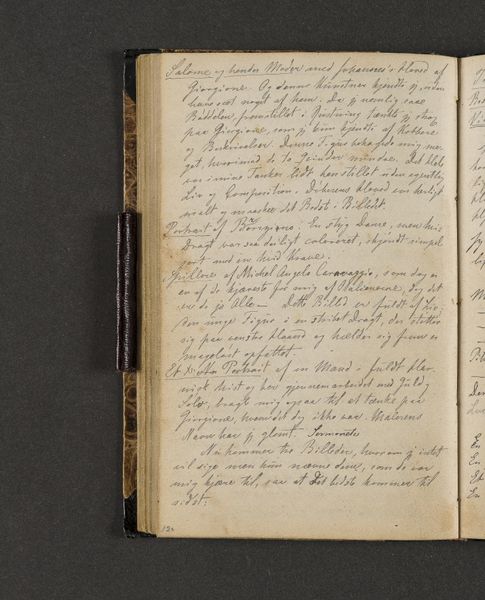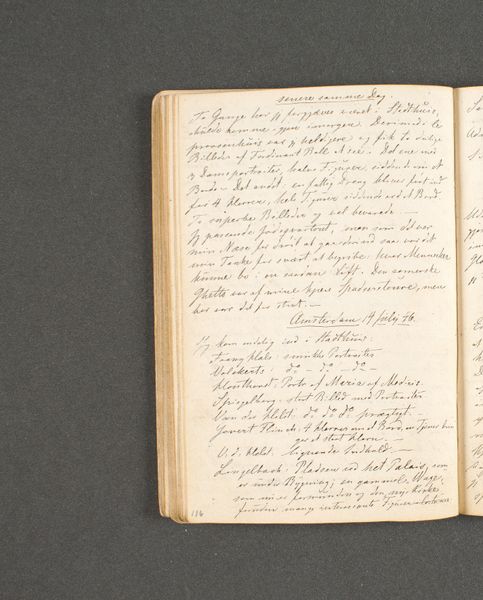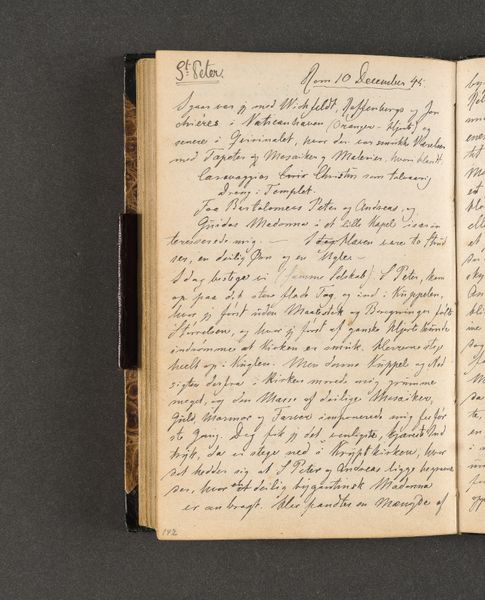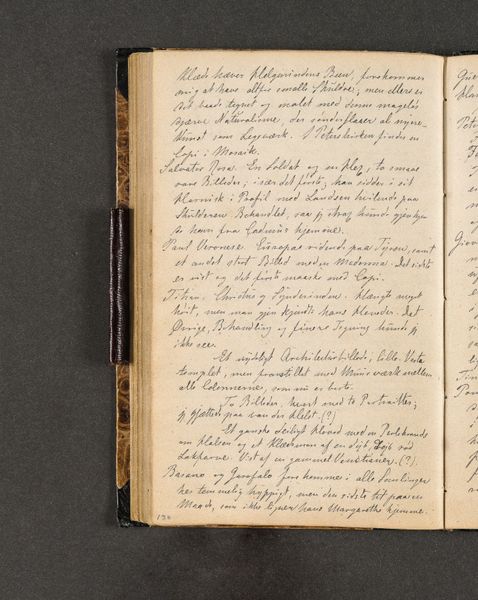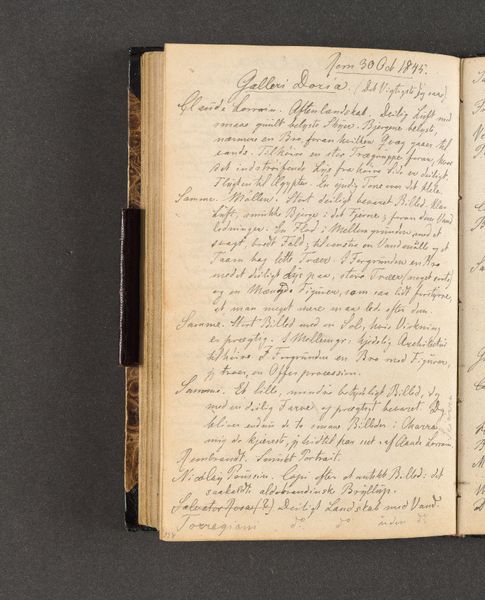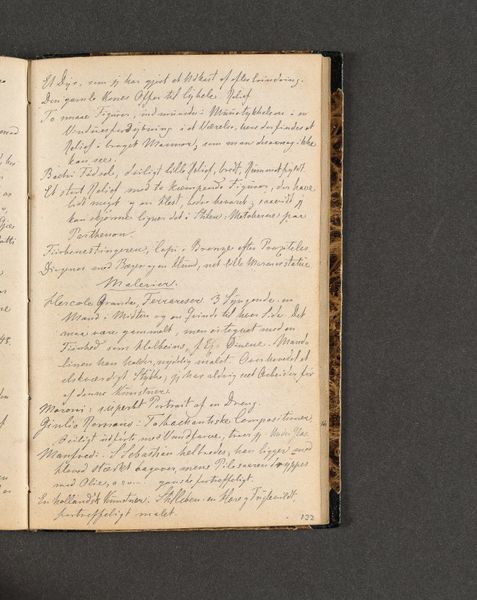
drawing, paper
#
portrait
#
drawing
#
paper
#
romanticism
#
miniature
Dimensions: 161 mm (height) x 103 mm (width) x 11 mm (depth) (monteringsmaal)
Curator: Let's discuss "Rejsedagbog," a travel journal page created around 1845 by Johan Thomas Lundbye. It resides now in the collection of the SMK, the National Gallery of Denmark. Editor: Immediately, I'm drawn to its intimate scale and the sense of personal reflection. The handwritten notes, the almost hurried script—it feels incredibly immediate and unfiltered. Curator: Absolutely. Lundbye, a significant figure in Danish Romanticism, used this journal extensively during his travels. It functions as a window into not only the physical landscape but also the interior world of the artist. We must acknowledge the societal context. Travel during that period was, for the most part, reserved for specific social classes, and what someone chose to record in their personal notes reflects the privileges and biases that were historically built into European culture and society. Editor: Indeed. Looking closer, I see mentions of both classical and religious imagery and notes on artworks by Caravaggio and Guercino alongside a passage dedicated to a “Nymphin nd: Nøerne” and an almost impatient annotation to see both the Mount of Olives and the legendary Penthelikon near Athens, almost in the same breath. Do these visual and textual pairings echo something particular in his cultural psyche? Curator: Yes. Lundbye was deeply influenced by both his Danish heritage and a broader European cultural tradition. His mentions indicate how artists often sought inspiration across multiple styles and eras, imbuing those references with their personal understanding of beauty, knowledge, and history. Editor: I appreciate how these scribbled annotations bring forth a vibrant constellation of mythology, geography, art history, and immediate sensations all coexisting on a single page. I can imagine this document serving as both memory and inspiration, sparking not just sketches but fully realized paintings. Curator: Precisely, and from a present-day point of view, the layers in the travel journal connect art with its historical moment, a cultural practice that opens dialogues about the formation of national identity and of European identity more broadly. Editor: Thank you. It leaves me reflecting on the ways we all process and transcribe our experiences—visually and psychologically. The layering feels deeply resonant even now.
Comments
No comments
Be the first to comment and join the conversation on the ultimate creative platform.
